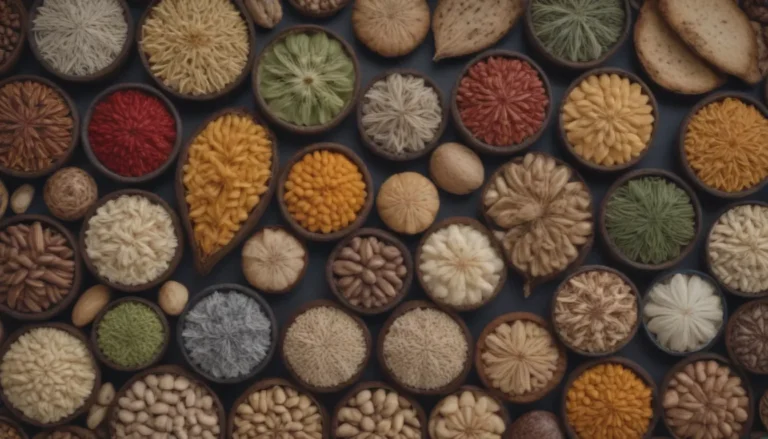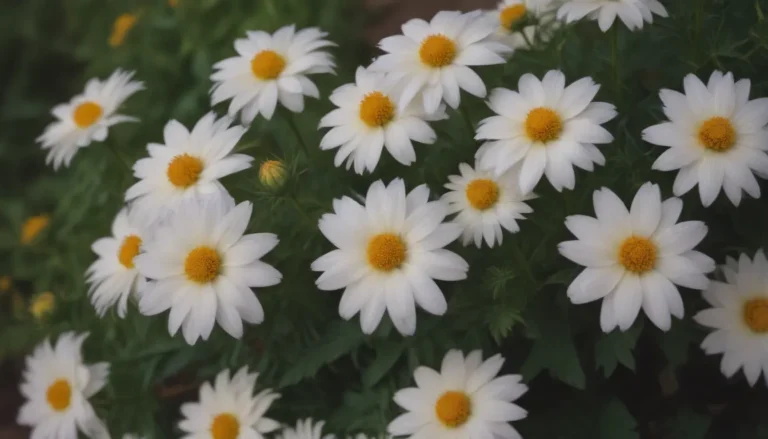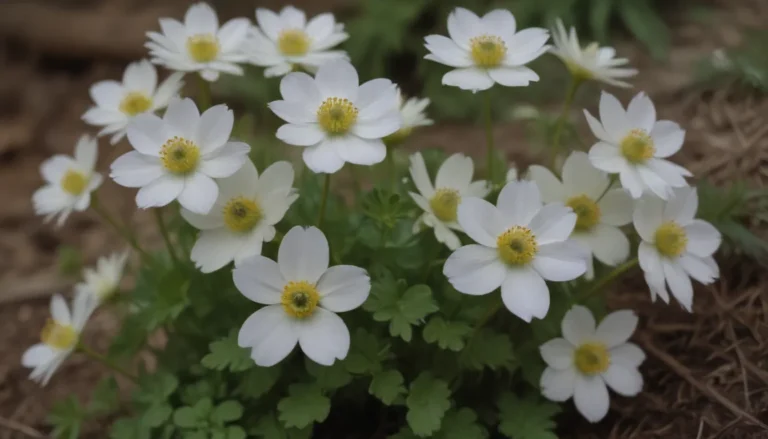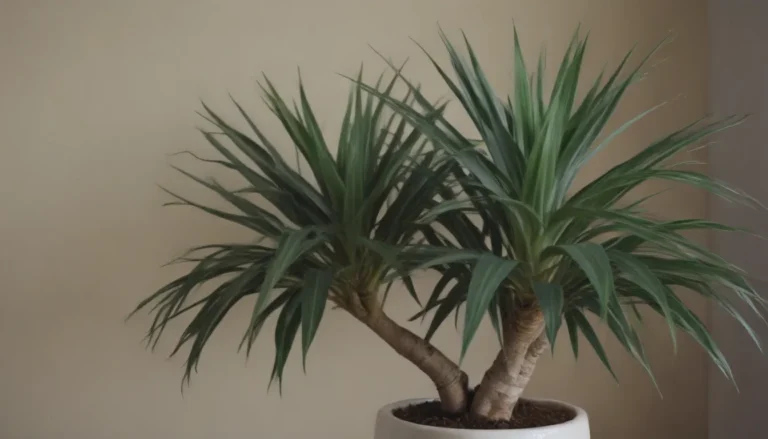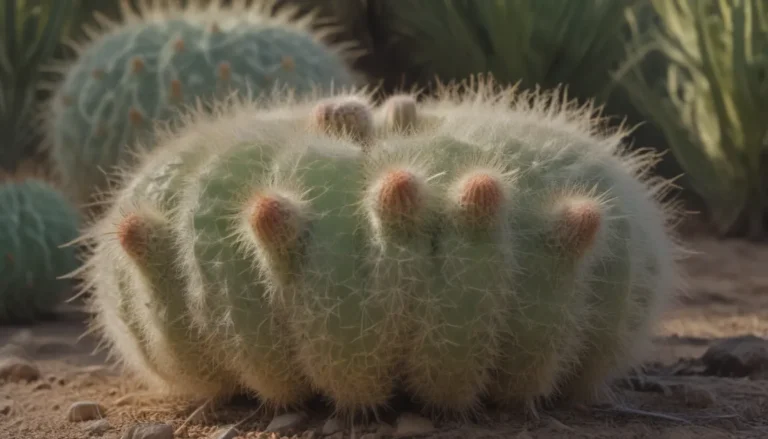The Ultimate Guide to Flowering Trees for Your Landscape

Are you looking to add a burst of color and texture to your landscape? Flowering trees are an excellent choice to achieve just that. Whether you’re aiming for a pop of pink, purple, white, or yellow, there is a flowering tree out there for every gardener. In this comprehensive guide, we will explore 29 stunning flowering trees that will brighten up your yard and provide relaxing shade during the summer months.
Why Choose Flowering Trees for Your Landscape?
Flowering trees offer numerous benefits beyond their aesthetic appeal. Here are some reasons why you should consider adding flowering trees to your landscape:
- Pop of Color: Flowering trees provide vibrant blooms that can enhance the beauty of your yard.
- Texture: The unique shapes and structures of flowering trees add visual interest to your landscape.
- Shade: Flowering trees can provide cooling shade during the hot summer months.
- Wildlife Habitat: Many flowering trees attract birds and pollinators, enhancing biodiversity in your yard.
- Seasonal Interest: From spring blossoms to fall foliage, flowering trees offer year-round beauty.
Choosing the Right Flowering Tree for Your Landscape
Before selecting a flowering tree for your landscape, consider the following factors:
- USDA Hardiness Zones: Choose a tree that is suitable for your growing zone to ensure its success.
- Flower Color: Decide on the color of blooms you prefer in your landscape.
- Light Requirements: Determine if your planting location receives full sun, partial sun, or shade.
- Soil Needs: Consider the soil type and drainage requirements of the tree.
- Mature Size: Plan for the tree’s ultimate height and spread to avoid overcrowding in your landscape.
Now, let’s delve into the list of 29 beautiful flowering trees that you can add to your landscape:
1. Star Magnolia
- USDA Hardiness Zones: 4-8
- Flower Color: White
- Light: Full sun to part shade
- Soil Needs: Moist, well-drained soil
- Mature Size: Up to 24 feet tall
The Star Magnolia is one of the first plants to bloom in the spring, boasting white star-shaped flowers that appear before the leaves. This large shrub can be trained as a tree, making it a versatile addition to your landscape.
2. Dogwood
- USDA Hardiness Zones: 5-9
- Flower Color: White, pink
- Light: Part shade to full sun
- Soil Needs: Well-drained, acidic soil
- Mature Size: Varies by species
In addition to its showy spring flowers, Dogwood trees offer landscape interest in fall and winter with their attractive foliage and berries. Choose from a variety of dogwood species to add charm to your yard.
3. Yoshino Cherry
- USDA Hardiness Zones: 5-8
- Flower Color: Light pink
- Light: Full sun
- Soil Needs: Well-drained, fertile soil
- Mature Size: Varies by cultivar
Cherry trees are renowned for their prolific blooms, and the Yoshino Cherry is no exception. Enjoy a stunning display of fragrant pink blossoms every spring with this hybrid cherry tree.
4. Weeping Cherry
- USDA Hardiness Zones: 5-8
- Flower Color: Pink
- Light: Full sun
- Soil Needs: Moist, well-drained soil
- Mature Size: Varies by cultivar
For a dramatic statement in your landscape, consider a Weeping Cherry tree. Its cascading branches and pink blooms create a stunning focal point in any garden.
5. Kwanzan Cherry
- USDA Hardiness Zones: 5-9
- Flower Color: Pink
- Light: Full sun
- Soil Needs: Well-drained soil
- Mature Size: 25-36 feet tall
With an upright form and a spectacular spring flowering show, the Kwanzan Cherry is a delightful addition to any landscape. This cherry tree also makes an excellent street tree.
6. Saucer Magnolias
- USDA Hardiness Zones: 4-9
- Flower Color: Pink, white, purple
- Light: Full sun to part shade
- Soil Needs: Moist, well-drained soil
- Mature Size: Up to 33 feet tall
Saucer Magnolias offer large, colorful blooms that brighten up the landscape in early spring. Be mindful of planting this tree in southern exposures to prevent damage to the flower buds.
7. Eastern Redbud
- USDA Hardiness Zones: 4-9
- Flower Color: Pink, purple
- Light: Full sun to part shade
- Soil Needs: Well-drained soil
- Mature Size: Up to 30 feet tall
Indigenous to North America, the Eastern Redbud is a standout flowering tree that blooms early in the spring, covering bare branches in pinkish-purple fuzz.
8. Hawthorn
- USDA Hardiness Zones: Varies by species
- Flower Color: Pink, white, red
- Light: Full sun to part shade
- Soil Needs: Well-drained soil
- Mature Size: Varies by species
Hawthorn trees offer color beyond early spring, blooming in late spring to early summer with pink, white, or red flowers. Birds enjoy the berries in fall or winter, adding wildlife interest to your landscape.
9. Golden Chain
- USDA Hardiness Zones: 5-7
- Flower Color: Yellow
- Light: Full sun
- Soil Needs: Well-drained soil
- Mature Size: Up to 20 feet tall
The striking Golden Chain Tree boasts vivid yellow blooms, but be cautious as all parts of this tree are toxic to people, dogs, and cats. Choose a sheltered location and keep an eye on pests and diseases when cultivating this tree.
Warning: All parts of a Golden Chain tree are toxic to people, dogs, and cats.
10. Crepe Myrtle
- USDA Hardiness Zones: 7-10
- Flower Color: Varies by cultivar
- Light: Full sun
- Soil Needs: Well-drained soil
- Mature Size: Up to 40 feet tall
For a summer explosion of color, consider planting Crepe Myrtle. This popular tree offers long blooming periods and can be trained into a tree form for a stunning display.
11. Oklahoma Redbud
- USDA Hardiness Zones: 5-9
- Flower Color: Dark pink
- Light: Full sun to part shade
- Soil Needs: Well-drained soil
- Mature Size: Up to 20 feet tall
With dark pink blooms that emerge before the leaves in spring, the Oklahoma Redbud is a standout addition to any landscape. Purple seed pods add visual interest in the winter months.
12. White Eastern Redbud
- USDA Hardiness Zones: 4-9
- Flower Color: White
- Light: Full sun to part shade
- Soil Needs: Well-drained soil
- Mature Size: Up to 30 feet tall
For those who prefer white blooms, the White Eastern Redbud is a stunning choice. Enjoy pea-like white flowers in early spring before the foliage emerges.
13. Higan Cherry
- USDA Hardiness Zones: 4-8
- Flower Color: Light pink
- Light: Full sun to part shade
- Soil Needs: Well-drained, fertile soil
- Mature Size: Up to 25 feet tall
The Higan Cherry tree adds bursts of color to the landscape with its light pink blooms in spring and vibrant fall foliage. This ornamental cherry tree is a must-have for any garden.
14. Fringe Tree
- USDA Hardiness Zones: 3-9
- Flower Color: White
- Light: Full sun to part shade
- Soil Needs: Well-drained soil
- Mature Size: 12-20 feet tall
Boasting rich texture, the Fringe Tree is covered in delicate, white, fringe-like flowers in spring that transition to bluish-black fruits. Add this ornamental tree for a unique touch in your landscape.
15. Flowering Crabapple
- USDA Hardiness Zones: Varies by species
- Flower Color: Varies by cultivar
- Light: Full sun
- Soil Needs: Well-draining, rich soil
- Mature Size: Up to 20 feet tall
With over 30 species to choose from, Flowering Crabapples offer showy blooms and tart fruits that are a favorite among gardeners. Plant in sunny locations with well-draining soil for best results.
16. Southern Magnolia
- USDA Hardiness Zones: 6-10
- Flower Color: White
- Light: Full sun to part shade
- Soil Needs: Rich, well-drained soil
- Mature Size: Up to 80 feet tall
Southern Magnolias are beloved for their large, fragrant flowers and glossy leaves. Native to the Southeastern United States, these trees require ample space to reach their full height.
17. Kousa Dogwood
- USDA Hardiness Zones: 5-8
- Flower Color: White
- Light: Full sun to part shade
- Soil Needs: Well-drained, acidic soil
- Mature Size: Up to 25 feet tall
Kousa Dogwood trees are versatile and attractive year-round. Their large bracts give the appearance of blooms and offer visual interest in the landscape.
18. Flowering Almond Tree
- USDA Hardiness Zones: 4-9
- Flower Color: Light pink
- Light: Full sun to part shade
- Soil Needs: Well-drained soil
- Mature Size: Up to 12 feet tall
Flowering Almond trees are known for their stunning light pink blooms that appear in early spring. These cold-tolerant trees are an excellent choice for gardeners in regions with harsh winters.
19. Juneberry
- USDA Hardiness Zones: 4-9
- Flower Color: White
- Light: Full sun to part shade
- Soil Needs: Well-drained soil
- Mature Size: Up to 25 feet tall
Juneberry trees offer fragrant white flowers in spring followed by delicious purple berries in summer. These berries are popular in pies and jams, adding versatility to this small tree.
20. Pear Tree
- USDA Hardiness Zones: 3-10
- Flower Color: White
- Light: Full sun
- Soil Needs: Well-drained soil
- Mature Size: Varies by species
Pear trees are not only beautiful in bloom but also provide delicious fruit in the summer. Enjoy stunning fall foliage from these versatile trees in your landscape.
21. Jerusalem Thorn
- USDA Hardiness Zones: 8-11
- Flower Color: Yellow
- Light: Full sun
- Soil Needs: Well-drained soil
- Mature Size: Up to 30 feet tall
The Jerusalem Thorn is a small flowering tree with delicate green foliage and bright yellow flowers. Enjoy year-round interest with this native tree.
22. Red Buckeye
- USDA Hardiness Zones: 4-8
- Flower Color: Red
- Light: Full sun to part shade
- Soil Needs: Well-drained soil
- Mature Size: Up to 20 feet tall
The Red Buckeye is known for its showy clusters of red blooms in spring. Plant this native tree for a splash of color in your landscape.
23. Silver Wattle
- USDA Hardiness Zones: 8-11
- Flower Color: Yellow
- Light: Full sun
- Soil Needs: Well-drained, sandy soil
- Mature Size: Up to 30 feet tall
The Silver Wattle offers delicate blue-gray leaves and fluffy yellow flowers in late winter and early spring. This hardy tree is a great addition to sunny landscapes.
24. Magnolia ‘Yellow Bird’
- USDA Hardiness Zones: 4-8
- Flower Color: Yellow
- Light: Full sun to part shade
- Soil Needs: Well-drained soil
- Mature Size: Up to 30 feet tall
Magnolia ‘Yellow Bird’ is a top choice for a yellow magnolia tree with bright tulip-like yellow blooms in late spring. This low-maintenance tree thrives in zones 4 to 8.
25. Japanese Snowbell
- USDA Hardiness Zones: 5-8
- Flower Color: White
- Light: Full sun to part shade
- Soil Needs: Well-drained soil
- Mature Size: Up to 25 feet tall
The Japanese Snowbell features delicate white flowers in spring, adding a touch of elegance to your landscape. This small tree is ideal for tight spaces.
26. Carolina Silverbell
- USDA Hardiness Zones: 4-8
- Flower Color: White
- Light: Full sun to part shade
- Soil Needs: Well-drained soil
- Mature Size: Up to 40 feet tall
The Carolina Silverbell displays white bell-shaped flowers in early spring, adding a charming touch to your landscape. Train this native tree as a shrub or tree for versatility.
27. Japanese Stewartia
- USDA Hardiness Zones: 5-8
- Flower Color: White
- Light: Full sun to part shade
- Soil Needs: Well-drained soil
- Mature Size: Up to 30 feet tall
The Japanese Stewartia offers fall blooms in small cup-shaped flowers that last until autumn. Enjoy year-round interest with this unique flowering tree.
28. Japanese Lilac Tree
- USDA Hardiness Zones: 3-7
- Flower Color: White
- Light: Full sun to part shade
- Soil Needs: Well-drained soil
- Mature Size: Up to 25 feet tall
The Japanese Lilac Tree is a tree-form lilac specimen that differs from common shrubs in flower scent, bloom time, and bark color. Consider these differences when selecting this tree.
29. Tulip Tree
- USDA Hardiness Zones: 4-9
- Flower Color: Yellow, green
- Light: Full sun to part shade
- Soil Needs: Well-drained soil
- Mature Size: Up to 90 feet tall
The Tulip Tree offers stunning spring flowers and fall foliage, attracting pollinators and adding visual interest to your landscape. Be prepared for the tree’s size and short-lived blooms when selecting this tree.
Maintenance Tips for Flowering Trees
After selecting the perfect flowering tree for your landscape, here are some maintenance tips to keep it healthy and thriving:
- Regular Watering: Ensure your flowering tree receives adequate water, especially during dry periods.
- Mulching: Add a layer of mulch around the base of the tree to retain moisture and prevent weed growth.
- Pruning: Prune your flowering tree as needed to maintain shape, remove dead or damaged branches, and promote healthy growth.
- Fertilizing: Apply a balanced fertilizer in spring to support the growth and blooming of your tree.
- Pest Control: Monitor your tree for pests and diseases, and take appropriate measures to prevent infestations.
- Winter Protection: In colder climates, protect your flowering tree from frost and winter damage to ensure its survival.
With proper care and attention, your flowering tree will reward you with stunning blooms and year-round beauty in your landscape.
Final Thoughts
Flowering trees are a valuable addition to any landscape, offering beauty, shade, and wildlife habitat. By selecting the right flowering tree for your growing zone and landscape conditions, you can create a vibrant and inviting outdoor space. Consider the flowering trees mentioned in this guide to enhance the beauty of your yard and enjoy the seasonal display of colorful blooms.
Transform your landscape with flowering trees and create a captivating outdoor oasis for you, your family, and wildlife to enjoy. Happy planting!
In conclusion, flowering trees are a fantastic addition to any landscape, providing beauty and benefits throughout the year. By selecting the right flowering tree for your yard and following maintenance tips, you can create a colorful and inviting outdoor space. Consider the variety of flowering trees mentioned in this guide to enhance the charm of your landscape and enjoy the natural beauty they offer. Happy gardening!
